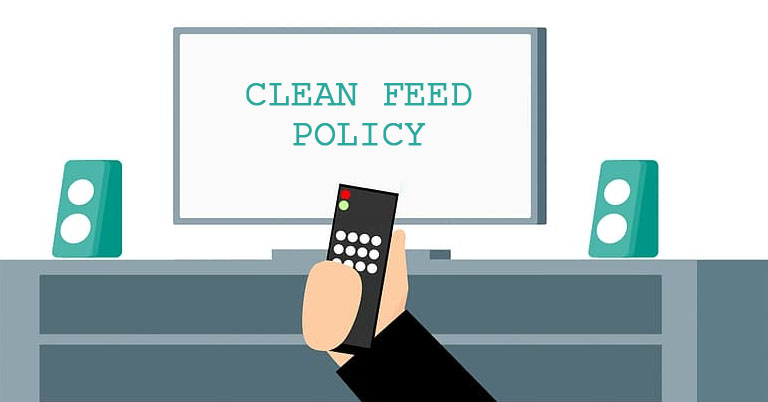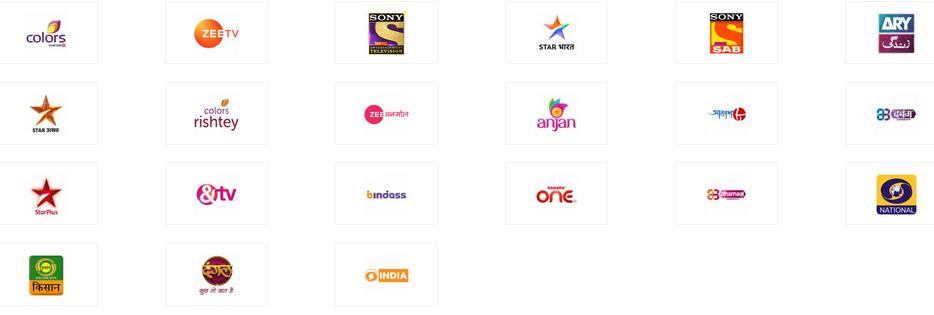
On June 24, 2019, every TV channel in the Nepali household suddenly went blank or included a request to contact their cable operators. It was a protest by the cable TV operators in the country, following a warning 24 hours beforehand. The 24-hour cable-blackout was an attempt to show us what the new Advertisement Bill, if enforced would look like, according to Sudhir Parajuli, the then-president of the Federation of Cable TV Association of Nepal. This is a bill regarding the “Television Clean Feed Policy“.
| Actually, the clean feed policy dates back to 2073 B.S. It was then published in the “Advertisement Regulation Act 2076” on Kartik 8, 2076 B.S for implementation. |
But first, what is the Television Clean Feed Policy?
Clean Feed, in its most basic form, means Television feed without any additional digital on-screen graphics or text in their transmissions. A TV station with a clean feed does not carry any television advertisements or breaks, or even underlying marquee texts on the screen. This is different from the Free Air Policy. For the record, under this, foreign TV channels require no subscription charge as they serve ads on their feed.
Here, the Television Clean Feed Policy is a part of the aforementioned Advertisement Regulation Act 2076. This rule implies that all foreign TV channels should stream without any advertisements since the viewers pay for the channels already; which is what makes it different from the Free Air Policy. In other words, the TV operators in Nepal that downlink foreign channels have to deliver an ad-free viewing experience.

The fundamental of the Clean Feed Policy is that foreign advertisements shouldn’t be fed to the Nepali people. Since we’re already paying for the channels themselves, having to watch their ads on top doesn’t align with consumer rights. Also, most of these ads bear no relevance at all in Nepal. And if foreign channels want to broadcast advertisements, they should make advertisements in Nepali language and local settings, so that it’s relevant for us viewers.
Of course, that’s not really feasible in a jiffy. Hence, the Clean Feed Policy. So, the government is vying for foreign channels without any ads. And if Nepali broadcasters so want, they can insert their own commercials in them, just like the Clean Feed Policy prevalent in India. If we are to receive the clean feed, i.e. foreign channels without any ads, we will have to pay an extra amount of money.
The Preparation & Implementation
As the Advertisement Regulation Act 2076 implies, technically, the television clean feed policy was already implemented in 2019. However, since its implementation was practically impossible just then and there, the Nepal government had prepared for a year’s buffer period. Under this, the clean feed policy was instantly applicable to all the new TV channel operators established on Kartik 8, 2076 B.S, or later.
But, to the existing companies, it had provided 1 year for making necessary preparations; like bringing in new technology, equipment, etc. And now, the allocated one-year-long preparation period has ended, therefore resulting in a widescale implementation of the said policy.
Why Television Clean Feed Policy in Nepal?
According to The Kathmandu Post, the Clean Feed Policy states that “Apart from a few exceptions, almost all of the foreign channels carry commercials made by multinationals and conglomerates for which Nepali viewers are paying monthly charges, while the domestic advertising industry is shrinking. Hence, the need for implementation of clean feed.”

The fact that companies do not need to pay anything to air their advertisements has downed Nepal’s advertisement industry by a great margin. Nepali TV viewers have a fascination with the Indian channels, as they are the major source of our entertainment. And this leads us to watch Indian advertisements, but we don’t really mind as they’re kinda entertaining although irrelevant. So, it’s obvious that those companies don’t really think of advertising on Nepali channels.
Without advertisements, TV channels can’t create better content. So, to tackle this issue, the Government is moving forward with the Clean Feed Policy. It wants to ensure that Nepali TV channels develop and make contents that attract Nepali viewers. Without foreign ads, international companies will have to invest their money in Nepal, so there’s that too.
Clean Feed Policy 2024 Update
Yes, the clean feed policy is still applicable in Nepal as of now. However, you will still find ads from foreign TV channels from time to time.
- Watch: Which one’s the best TV operator in Nepal?







![Best Gaming Laptops in Nepal Under Rs. 250,000 (रु 2.5 Lakhs) [2025] Best Gaming Laptops Under 2.5 lakhs in Nepal [Feb 2025 Update]](https://cdn.gadgetbytenepal.com/wp-content/uploads/2025/02/Best-Gaming-Laptops-Under-2.5-lakhs-in-Nepal-Feb-2025-Update.jpg)
![Best Gaming Laptops in Nepal Under Rs. 120,000 (रु 1.2 Lakhs) [2025] Best Budget Gaming Laptops Under Rs 120000 in Nepal 2025 Update](https://cdn.gadgetbytenepal.com/wp-content/uploads/2025/05/Best-Budget-Gaming-Laptops-Under-Rs-120000-in-Nepal-2024-Update.jpg)
![Best Laptops Under Rs. 80,000 in Nepal [2025] Best Laptops Under 80,000 in Nepal March 2025 Update](https://cdn.gadgetbytenepal.com/wp-content/uploads/2025/03/Best-Laptops-Under-80000-in-Nepal-March-2025-Update.jpg)
![Best Gaming Laptops in Nepal Under Rs. 200,000 (रु 2 Lakhs) [2025] Best gaming lapotp under 2 lakhs Nepal Feb 2025](https://cdn.gadgetbytenepal.com/wp-content/uploads/2025/01/Best-Gaming-Laptops-Under-2-Lakh-Nepal-Feb-2025-Update.jpg)

![Best Mobile Phones Under Rs. 15,000 in Nepal [Updated 2025] Best Phones Under 15000 in Nepal 2024 Budget Smartphones Cheap Affordable](https://cdn.gadgetbytenepal.com/wp-content/uploads/2024/03/Best-Phones-Under-15000-in-Nepal-2024.jpg)
![Best Mobile Phones Under Rs. 20,000 in Nepal [Updated] Best Mobile Phones Under NPR 20000 in Nepal 2023 Updated Samsung Xiaomi Redmi POCO Realme Narzo Benco](https://cdn.gadgetbytenepal.com/wp-content/uploads/2024/01/Best-Phones-Under-20000-in-Nepal-2024.jpg)
![Best Mobile Phones Under Rs. 30,000 in Nepal [Updated 2025] Best Phones Under 30000 in Nepal](https://cdn.gadgetbytenepal.com/wp-content/uploads/2025/01/Best-Phones-Under-30000-in-Nepal.jpg)
![Best Mobile Phones Under Rs. 40,000 in Nepal [Updated 2025] Best Phones Under 40000 in Nepal 2024 Smartphones Mobile Midrange](https://cdn.gadgetbytenepal.com/wp-content/uploads/2024/02/Best-Phones-Under-40000-in-Nepal-2024.jpg)
![Best Mobile Phones Under Rs. 50,000 in Nepal [Updated 2025] Best Phones Under 50000 in Nepal](https://cdn.gadgetbytenepal.com/wp-content/uploads/2025/01/Best-Phones-Under-50000-in-Nepal.jpg)
![Best Flagship Smartphones To Buy In Nepal [Updated] Best flagship phone 2025](https://cdn.gadgetbytenepal.com/wp-content/uploads/2024/07/Best-Flagship-Phones-who-is-it-ft-1.jpg)